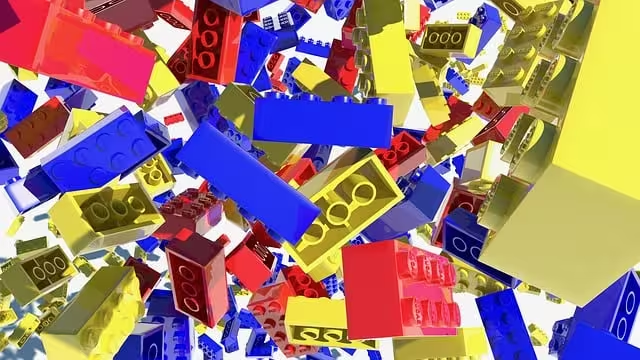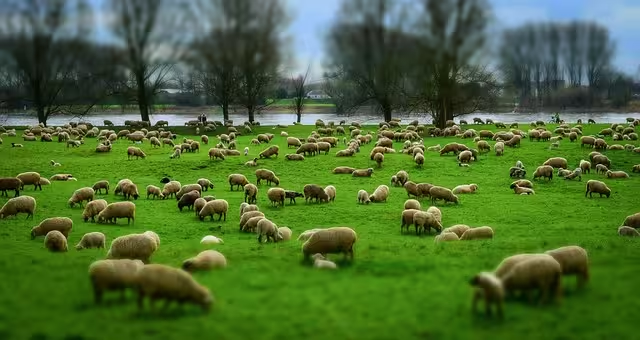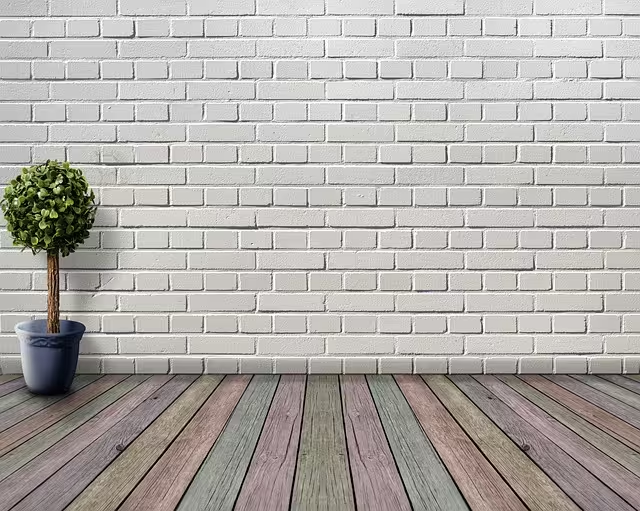It is a persistent misconception that the empty areas on a digital page represent a void—a passive, unfilled vacuum. This perspective treats design as a process of mere addition, where value is created only by what is present. A more refined and functionally accurate understanding, however, reveals that white space, or negative space, is not an absent or just blank used space. In the language of biophilic design, it is the breathable air, the fertile soil, and the clear sky that allows the primary elements of a composition to flourish. It is an active, structural component that dictates flow, focus, and comprehension.
A significant number of demonstrable usability issues, from elevated cognitive load and user frustration to diminished conversion rates and high bounce rates, can be traced directly back to its improper application. The objective of the following analysis is to systematically identify these common mistakes with white space in UX and provide the architectural principles required for their correction, transforming chaotic digital environments into spaces of clarity and intention.
Table of Contents
The Functional Purpose of Negative Space in Digital Ecosystems
Before one can diagnose errors in the application of white space, one must first establish a firm understanding of its fundamental purpose. To treat it as mere decoration or a stylistic choice of minimalism is to miss its important psychological and functional impacts on the user. Negative space is the silent partner to your content, an invisible architecture that guides, clarifies, and persuades. Its effective use is not just an aesthetic preference; it is a prerequisite for a high-functioning digital interface.
The human brain possesses a finite amount of working memory, a concept known as cognitive load. When an interface is cluttered with information, having elements competing for attention and lacking clear separation, increases cognitive load dramatically. As a result, the user is forced to expend mental energy not on understanding the content or making a decision, but simply on parsing the visual chaos.
Effective use of white space acts as a filtration system, reducing this cognitive load by visually chunking content into manageable, digestible segments. It tells the user, “This block of information is a single, related concept. You can process it as one unit before moving to the next.” This principle is mathematically reinforced by Hick’s Law, which posits that the time it takes to make a decision increases logarithmically with the number and complexity of choices. By using white space to simplify the presentation and reduce the perceived number of choices, we directly decrease decision time and user friction.
Beyond cognitive load, white space helps with readability and comprehension. Studies have consistently shown that proper use of micro white space—the white space between lines of text (leading) and paragraphs—can improve reading comprehension by up to 20%. This is not a trivial enhancement. When text is densely packed, the eye struggles to track from the end of one line to the beginning of the next, a process known as saccade. Sufficient line height provides a clear, unobstructed path for the eye, reducing fatigue and making content consumption a less strenuous activity.
Finally, white space is the primary tool for establishing a clear visual hierarchy. While typography, color, and size are important, it is the space around an element that often grants it significance. An isolated Call-to-Action (CTA) button, surrounded by a generous buffer of negative space, is perceived as more important and is more likely to be acted upon than one crowded by adjacent text and images. This space acts as a spotlight, drawing the user’s focus to the most critical actions and information on the page.
To apply these principles effectively, it is essential to distinguish between the two primary types of white space:
- Macro White Space: This refers to the large-scale spacing between the major elements of a layout. It is the space between the page header and the main content, the space separating the content from the footer, and the space between columns or distinct content sections. Macro white space is the landscape architecture of your page, defining its overall structure, rhythm, and flow.
- Micro White Space: This refers to the fine-tuning of space at a granular level. It includes the space between lines of text (
line-height), the space between letters (letter-spacing) and words (word-spacing), and the padding within elements like buttons or list items. Micro white space is the local environment that governs legibility and ensures a polished, professional finish.
While the term “white space” is common, the more technically precise term is “negative space.” This is because the space itself is rarely pure white, and more importantly, the term “negative” correctly implies its function as an active shaping force, like a mold that gives form to the “positive” elements of content. Understanding this functional foundation is the first step toward mastering its use.
Analysis of Common Mistakes with White Space in UX
With a clear understanding of its purpose, we can now dissect the most prevalent and damaging errors in its implementation. These mistakes are not isolated technical flaws; they are fundamental breaches of design principles that create friction, confusion, and a degraded user experience.
Mistake 1: Insufficient Macro White Space – The Cluttered Jungle

Description: This is perhaps the most common mistake, characterized by pages where major layout elements are crammed together without adequate breathing room. It often stems from a misguided belief that every pixel, particularly “above the fold,” must be filled with content to maximize its value. The result is an interface that feels dense, overwhelming, and claustrophobic.
The Biophilic Analogy: This is the digital equivalent of a dense, unmanaged jungle. Light cannot penetrate, paths are obscured, and navigation is a stressful, disorienting ordeal. The user is confronted with a wall of competing stimuli, with no clear indication of where to begin or which path leads to their goal. There is no sense of place, only a chaotic overgrowth of information.
Tangible Impact: The immediate impact is a spike in cognitive load. Users are paralyzed by choice and visual noise, leading to high bounce rates as they quickly retreat to a less demanding environment. This clutter devalues the content within it; even high-quality information appears less credible when presented in a chaotic manner. From a business perspective, key value propositions and CTAs are lost in the noise, leading to plummeting conversion rates. The overall brand perception suffers, as the design appears cheap, untrustworthy, and unprofessional.
Technical Solution: The solution lies in systemic control. Implement a consistent grid system, such as a 4-point or 8-point grid, to govern the placement and spacing of all major elements. In CSS, this means defining a spacing scale using variables or utility classes for margin-block and padding-inline. For instance, define that the space between major sections will be 64px, and the space between a heading and its subsequent paragraph will be 24px. Enforcing this system across the entire site ensures a predictable rhythm and provides the necessary macro white space for elements to be perceived clearly.
Mistake 2: Inconsistent Spacing – The Unpredictable Path

Description: This error occurs when the spacing rules are applied arbitrarily. A card element might have 20px of padding on one page, but 24px on another. The margin below an <h2> heading might vary from section to section. While these inconsistencies may seem minor in isolation, their cumulative effect is significant.
The Biophilic Analogy: This is like walking a path in the woods where the stones are laid at random, unpredictable intervals. Sometimes the next step is short, sometimes it is a long leap. The walker cannot develop a natural rhythm; their brain is forced to consciously calculate each step, making the journey inefficient and mentally taxing. It breaks the sense of engineered harmony one feels in a well-designed park or trail.
Tangible Impact: Inconsistency creates cognitive dissonance. The human brain is a pattern-recognition machine; when patterns are broken without reason, it introduces a subtle but persistent friction. The user’s subconscious has to work harder to decode the page’s structure, leading to a feeling that the site is “off” or poorly constructed. This erodes trust and professionalism. From a development standpoint, it leads to bloated, unmaintainable CSS, as developers add one-off overrides instead of adhering to a global system.
Technical Solution: The solution is the codification of design principles into a Design System or, at a minimum, a style guide. Use CSS Custom Properties (variables) to define your spacing tokens (e.g., --space-sm: 8px; --space-md: 16px; --space-lg: 32px;). All margin and padding values throughout the application should then reference these variables. This not only guarantees consistency but also makes global changes trivial. Tools like Figma’s “Auto Layout” and “Styles” are invaluable for enforcing these rules during the design phase, ensuring they are baked into the project from its inception.
Mistake 3: Neglecting Micro White Space – Sacrificing Legibility

Description: This mistake involves the failure to apply sufficient spacing at the most granular level: within the text itself. It manifests as paragraphs with tight, restrictive line-height (leading), headings with cramped letter-spacing (tracking), and words that run too closely together.
The Biophilic Analogy: This is akin to planting a row of beautiful flowers so close together that their roots compete for nutrients and their leaves block each other from the sun. While the individual elements (the words) may be sound, their dense arrangement prevents them from thriving. The overall presentation becomes a tangled, unappealing mass that is difficult to appreciate.
Tangible Impact: The primary victim of poor micro white space is legibility. Text becomes a solid, intimidating block, significantly increasing the effort required to read it. Think of blocks of fine print, but larger. User fatigue sets in quickly, leading to the abandonment of long-form content. This is particularly damaging for blogs, articles, and product descriptions. It also fails to meet accessibility standards, as users with visual impairments or reading disabilities like dyslexia find such text nearly impossible to parse.
Technical Solution: Adhere to established typographic and accessibility best practices. For body copy, a line-height of 1.5 to 1.7 (i.e., 150-170% of the font size) is a reliable standard. Ensure there is clear paragraph spacing, typically equal to one full line height. For headings, consider applying a small amount of negative letter-spacing to larger font sizes to improve their visual coherence, and a small amount of positive letter-spacing to all-caps text to prevent it from feeling too dense. These small adjustments have a disproportionately large impact on the user experience.
Mistake 4: Ignoring the Law of Proximity – False Relationships
Description: This is a fundamental violation of Gestalt Principles, specifically the Law of Proximity, which states that objects that are close to one another are perceived as a single group. This mistake occurs when white space is used in a way that incorrectly groups or separates related items. The classic example is in web forms, where a label is spaced equally between the input field above it and the input field it belongs to below it, creating ambiguity.
The Biophilic Analogy: Imagine a shepherd and their flock of sheep in a field. If the shepherd stands equidistant between their own flock and a neighboring flock, an observer from a distance cannot determine which flock they belong to. To establish a clear relationship, the shepherd must stand closer to their own sheep. White space functions in the same way, using distance to signify relationships.
Tangible Impact: The direct result is user confusion and error. In the form example, users may enter information into the wrong field. In a product listing, a price might appear to be associated with the wrong product. This forces the user to stop, analyze, and consciously work to understand the interface, which should be intuitive. It creates hesitation and doubt, eroding the user’s confidence in the system and their ability to use it correctly.
Technical Solution: Be deliberate and dogmatic about grouping. The space connecting related elements must always be less than the space separating them from other groups. In a form, the margin-top of a label should be significantly larger than its margin-bottom. In a list of articles, the space between a headline, its author, and its summary should be tight, while the space separating that entire article block from the next one should be generous. This creates clear, unambiguous and easy to find visual “chunks.”
Mistake 5: Trapped Negative Space – Awkward Voids

Description: This error involves the unintentional creation of awkward, distracting pockets of negative space that disrupt the visual flow of the page. This is a common byproduct of using justified text alignment, which creates “rivers” of space flowing through the text block, or using long passages of center-aligned text, which results in a ragged, unbalanced edge on both sides.
The Biophilic Analogy: This is like having a perfectly manicured lawn with a single, inexplicable hole dug in the middle of it. The eye is not drawn to the beautiful grass or the well-tended flower beds; it is drawn to the anomaly, the disruption. These trapped voids are visual noise that pulls attention away from the intended focal points.
Tangible Impact: Trapped white space makes a layout feel accidental, unbalanced, and unprofessional. It distracts the user’s eye, interrupting the natural Z-pattern or F-pattern of scanning. This can cause users to miss important information that is adjacent to the trapped space. It signals a lack of care and attention to detail in the design, which can subtly undermine the credibility of the entire product.
Technical Solution: For bodies of text, overwhelmingly favor flush-left (or right, for RTL languages) alignment. This provides a consistent hard edge for the eye to return to after each line. Avoid center-aligning any text longer than two or three lines. When using card-based layouts or other grid structures, utilize modern CSS layout modules like Flexbox (justify-content: space-between) or CSS Grid with caution, ensuring that in rows with fewer items, the remaining items align predictably rather than creating massive, awkward gaps.
Mistake 6: Poor CTA Isolation – The Camouflaged Action

Description: This critical error occurs when a primary Call-to-Action (CTA)—the “Buy Now” button, the “Sign Up” link, the “Request a Demo” form—is not given sufficient negative space to distinguish it from surrounding content. It is visually crowded, competing with headlines, images, and body text for attention.
The Biophilic Analogy: Think of a rare, vibrant flower, which is the focus of the garden’s design that has been allowed to be overgrown by common weeds and grass. Because it is not given its own space to be seen, its value is lost or not seen at all. An observer might walk right past it without ever noticing its significance.
Tangible Impact: The business impact here is direct and severe: reduced conversion rates. If users cannot easily locate and target the primary action on a page, they are far less likely to complete it. This violates Fitt’s Law, which states that the time to acquire a target is a function of the distance to and size of the target. By surrounding a CTA with clutter, you effectively increase the “distance” the user’s eye and cursor must travel through noise to acquire it, increasing the time and effort required. The most important element on the page becomes just another piece of the scenery.
Technical Solution: Treat your CTAs like royalty. Provide them with generous, unambiguous padding and margin. The space around a primary button should be significantly larger than the space around less important elements making it stand out. This visual isolation elevates its position in the hierarchy and makes it an unmissable focal point. Test different spacing values to see the impact on click-through rates; often, increasing the margin around a button by a few pixels can have a measurable positive effect.
Mistake 7: Excessive White Space – The Sparse Desert
Description: While a lack of white space is a more common problem, an overabundance of it can also be detrimental. This occurs when so much space is used that related elements begin to feel disconnected, or when the user is forced to scroll excessively to consume a coherent block of information.
The Biophilic Analogy: This is a vast, arid desert. While there is plenty of open space, the vital elements—water, food, shelter—are so far apart that the journey between them is perilous and inefficient. The sense of a cohesive ecosystem is lost, replaced by a feeling of emptiness and disconnection.
Tangible Impact: Overly generous spacing can violate the Law of Proximity just as surely as insufficient spacing can. If a headline is too far away from the paragraph it introduces, the user may not perceive them as being related. It can also create usability issues, particularly on large monitors, where content becomes spread out to the point of being disjointed. If a user has to scroll past two full screen heights of empty space to get from a product image to its description, the user journey has been broken.
Technical Solution: Balance is the operative word. White space must be used with intention, not just for the sake of it. The goal is to create clear groups and a comfortable rhythm, not a sparse landscape. Use max-width on content containers to prevent text lines from becoming unreadably long on wide screens. Test your designs on a variety of viewport sizes, from mobile to ultra-wide desktop, to ensure the spacing relationships hold up and do not create excessive emptiness.26 The goal is clarity, not sparseness.
Implementing Correct Spacing: Tools and Core Concepts
Correcting these mistakes requires not only a conceptual understanding but also a practical command of the tools and systems that enforce consistency. The principles of white space are implemented at every stage of the product design lifecycle.
During the design phase, tools like Figma, Adobe XD, and Sketch are essential. Using features like Auto Layout in Figma, Stacks in Sketch, and component-based design in all three allows designers to build spacing rules directly into the components. Creating a library of reusable components with predefined padding ensures that every instance of a button or card is perfectly consistent. Defining a “Style Guide” for spacing and typography is a non-negotiable step for any serious project.
In development, the implementation is handled by CSS. While classic properties like margin and padding are the workhorses, modern layout modules have made managing space more intuitive and powerful. CSS Flexbox and CSS Grid are transformative; the gap property in both allows developers to define the space between elements in a container, rather than on the elements themselves, which elegantly solves many alignment and spacing problems. Using CSS Custom Properties to store your spacing tokens (--space-md: 16px;) allows for the creation of a global, easily maintainable system that aligns perfectly with the design tokens established in Figma.
These modern tools allow us to implement the foundational wisdom of design systems like Google’s Material Design and Apple’s Human Interface Guidelines. Both of these systems place an enormous emphasis on clarity, intention, and predictable rhythm—all of which are achieved primarily through the meticulous management of white space. They provide detailed specifications for everything from tap target size to layout density, serving as an invaluable reference. The work of usability pioneers like Don Norman, who conceptualized “signifiers,” and Jakob Nielsen, whose heuristics include “Aesthetic and minimalist design,” provides the theoretical bedrock. White space is one of the most powerful signifiers a designer has, indicating separation, relationship, and importance without a single word.
Conclusion: Cultivating a Natural and Intentional Digital Space
The effective application of white space is the signature of a mature and sophisticated design practice. It represents a shift in thinking: from filling a canvas to shaping an environment. By systematically avoiding the common mistakes of clutter, inconsistency, illegibility, false groupings, distracting voids, camouflaged actions, and excessive sparseness, we can elevate our work. We move beyond simply presenting information to creating a clear, intuitive, and persuasive user journey.
The final design should feel less like a chaotic, overgrown thicket and more like a thoughtfully designed garden or a serene natural landscape. It is a space where every element has room to breathe, where the paths are clear, and where the most important features are given the prominence they deserve. The void is not an absence to be feared, but a tool to be mastered. It is the silent, structural force that brings clarity, function, and even beauty to the digital world.

